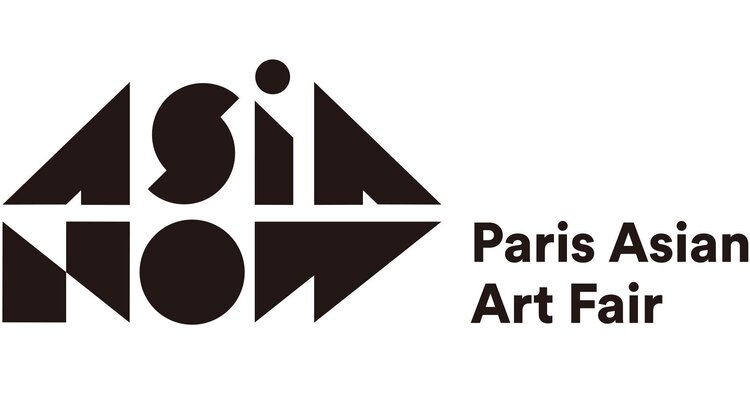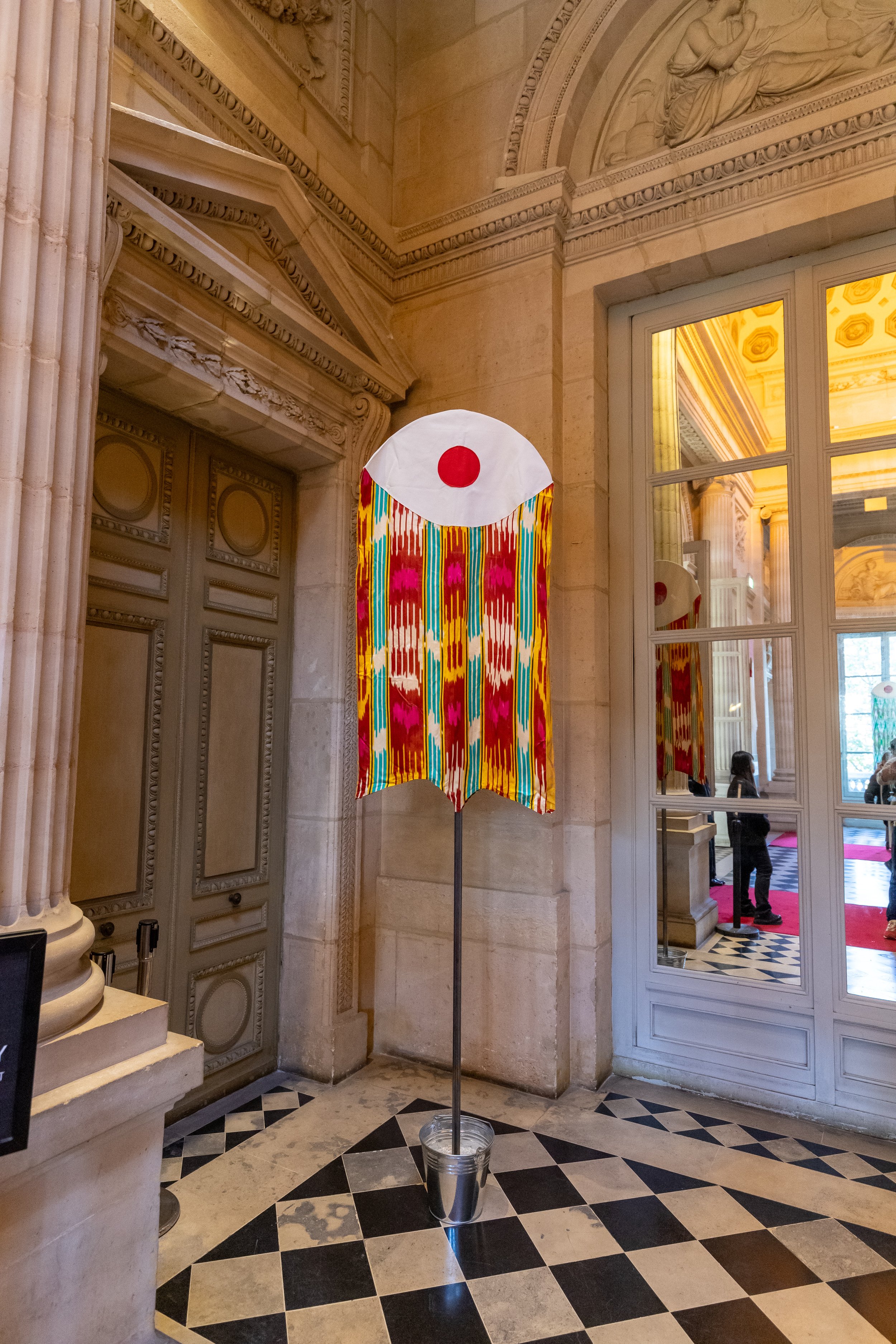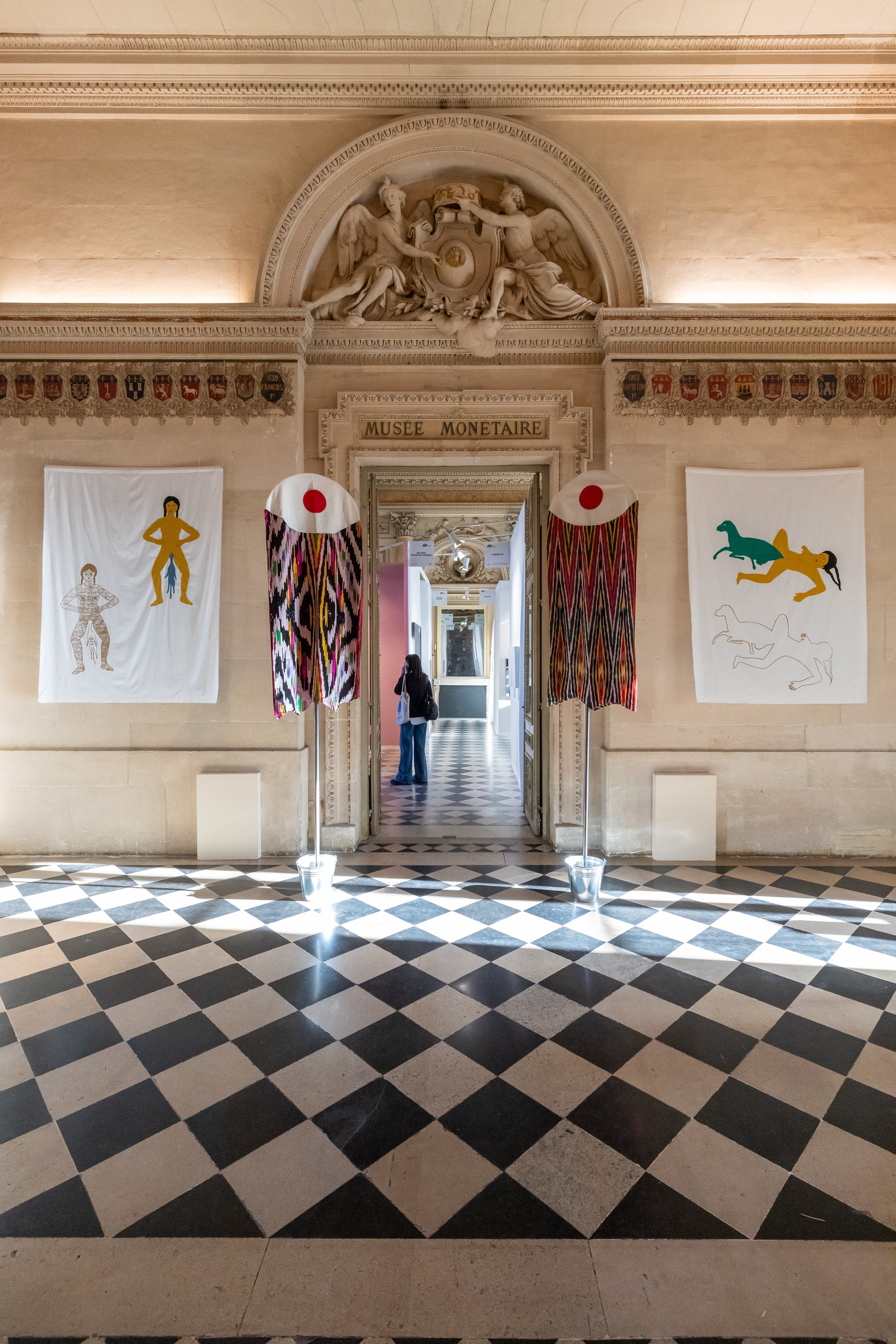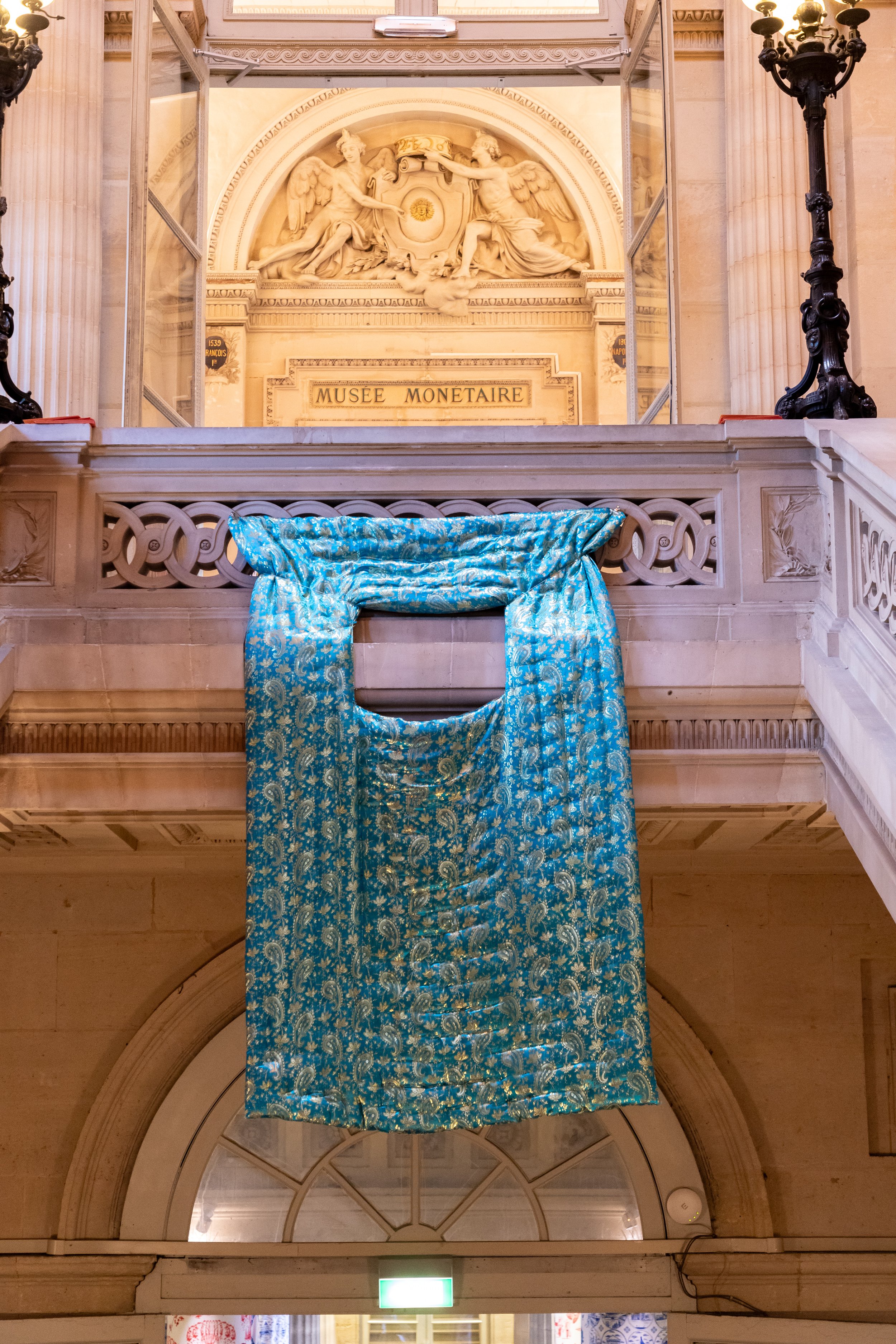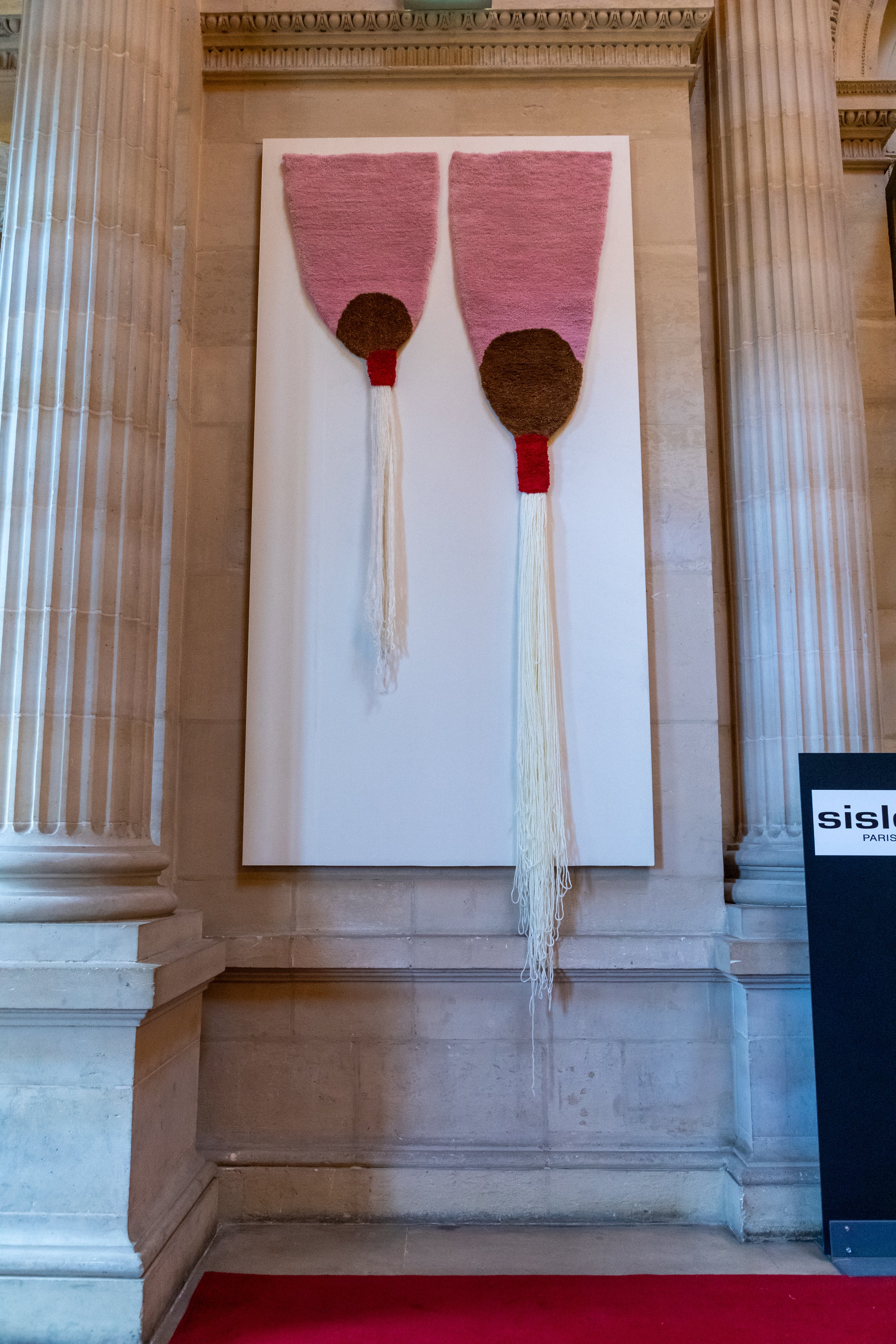Parcours by Slavs and Tatars

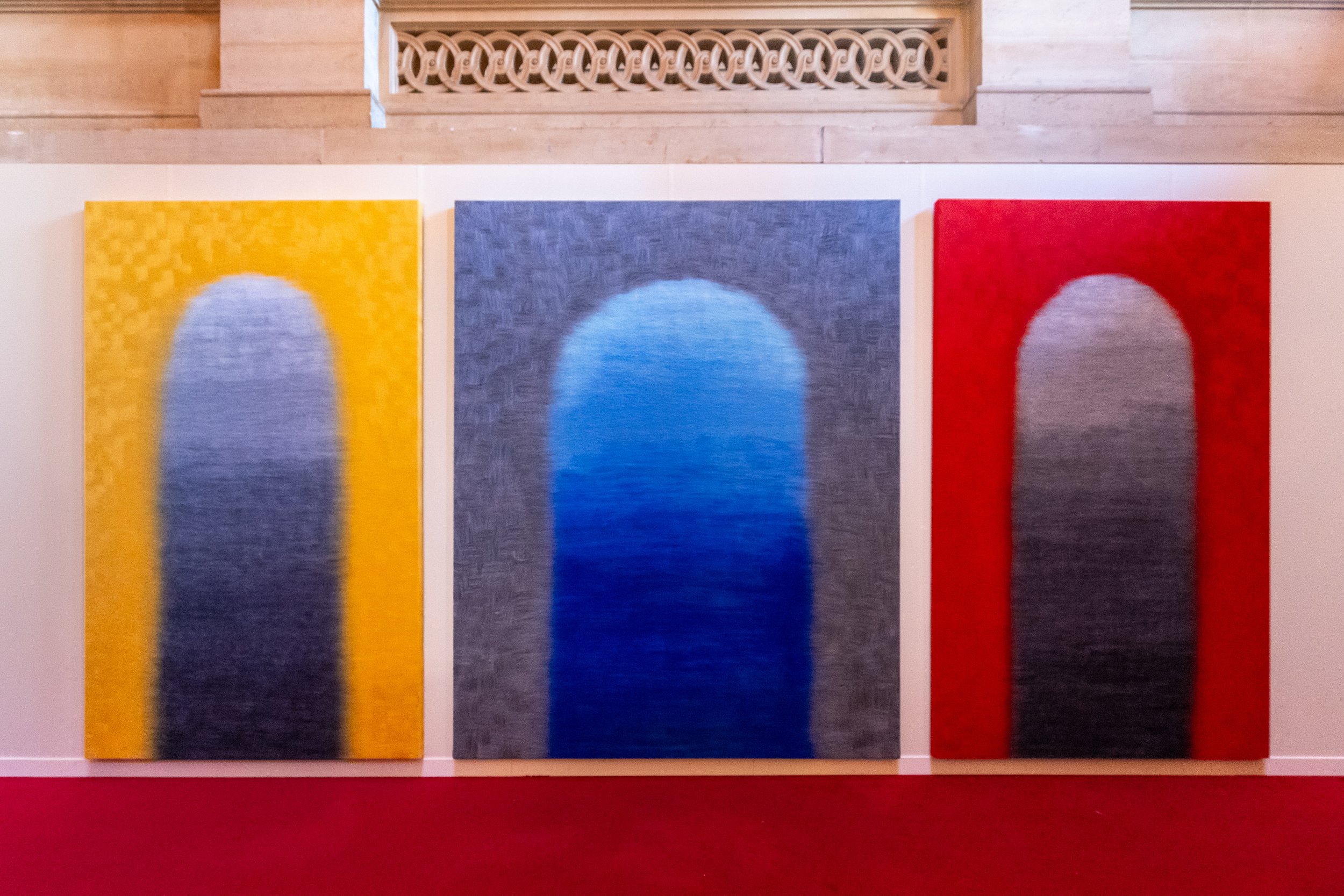
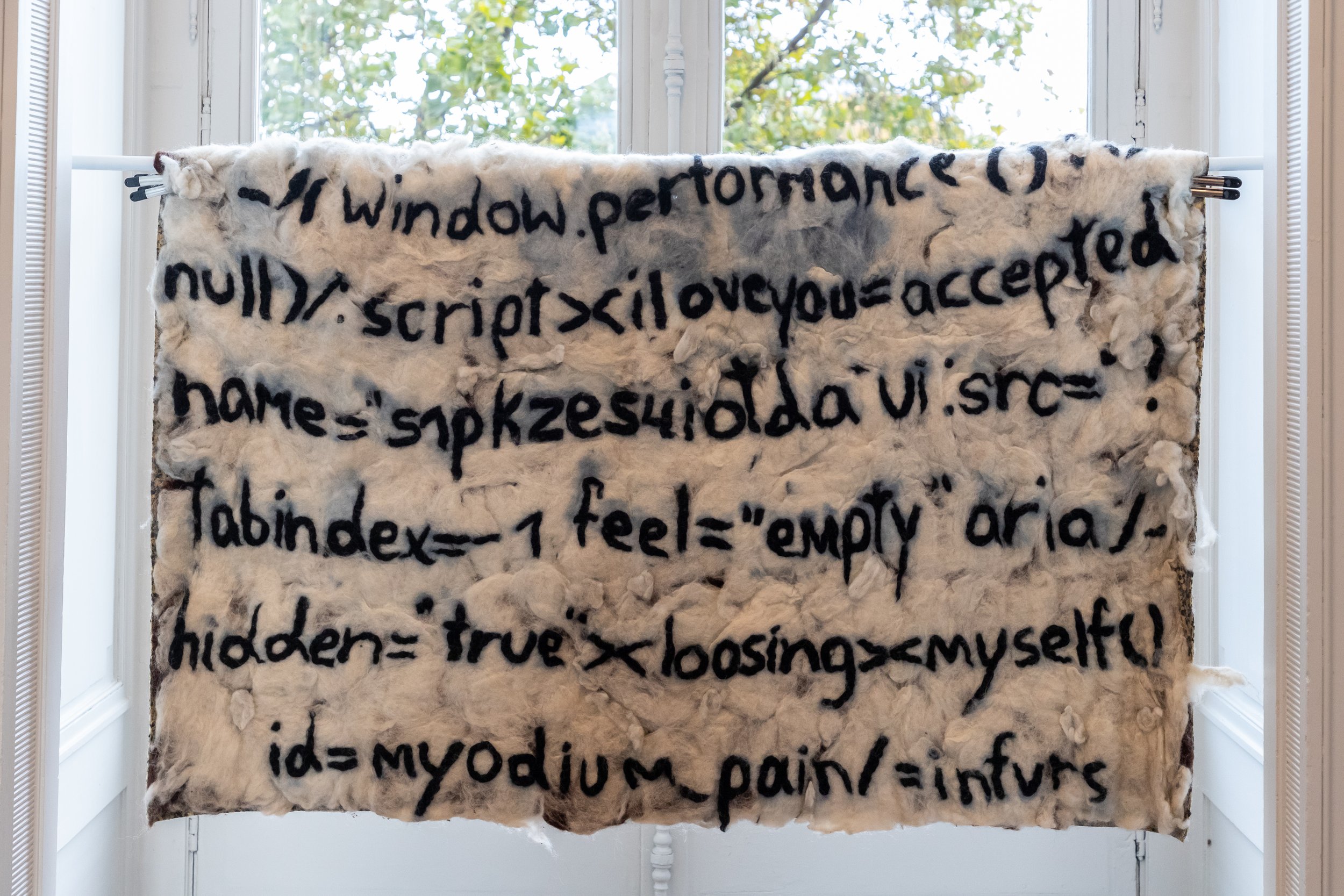
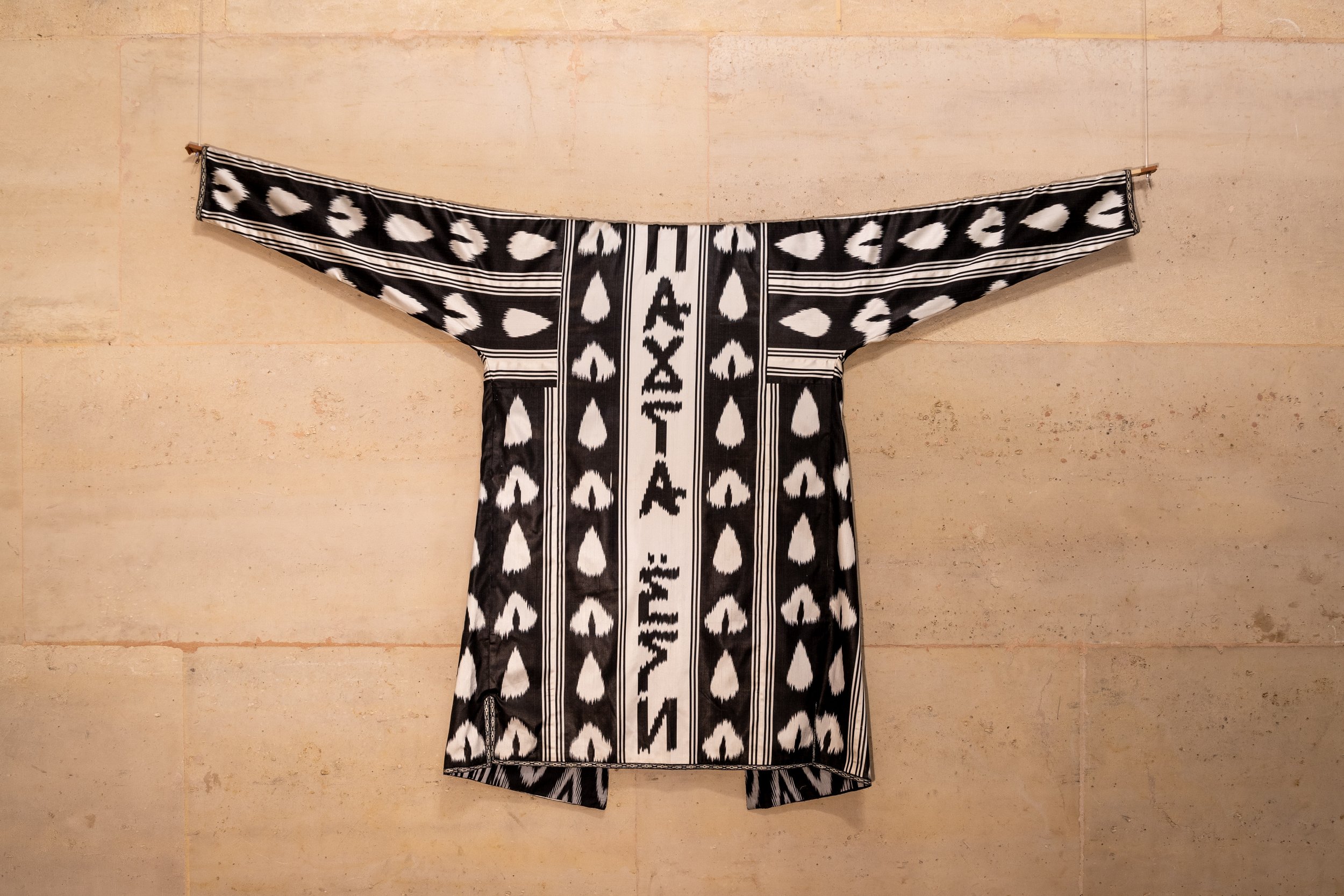
Exhibited artists: Askhat Akhmedyarov, Said Atabekov, Alibay Bapanov, Nazzy Beglari, Medina Bazarğali, Saule Dyussenbina, Madina Joldybek, Dilyara Kaipova, Kubra Khademi, Almagul Menlibayeva, Gulnur Mukazhanova, Nazilya Nagimova, Aziza Shadenova, Guzel Zakir.
Parcours by Slavs and Tatars at Asia NOW gathers 14 artists from Central Asia whose practice is based on or related to fiber. The exhibition looks at weaving techniques and textiles from Central Asia as a means to better understand the blurred boundaries between the illusory and the real in our current times. Presented over six locations of the Monnaie de Paris, the selection highlights the discursive nature of craft-making in the local context of Central Asia and its regional and global context.
By their very nature, textiles contain multitudes. In their production–through the web and warp of several threads–as well as in their genealogy: through the transfer of collective knowledge and skills. The ikat of Central Asia adds a further element, via multiple rounds of dyeing, to this understanding of quantities, of abundance, of excess. What often results is a shimmer effect, as the threads are dyed prior to weaving and perfectly aligning them becomes a near impossible feat; in essence, a blur, but one which is sought after, coveted and prized.
The weaving of ikats is called abr-bandi, an original Persianate term, meaning “to tie clouds”. Seen from the perch of the early 21st century, in the thick of the information age, the cloud-tying of ikats suggests another horizon: one of data and digitalization as much as one of dyes and fabric.
Parcours proposed by Slavs and Tatars is supported by Sisley
